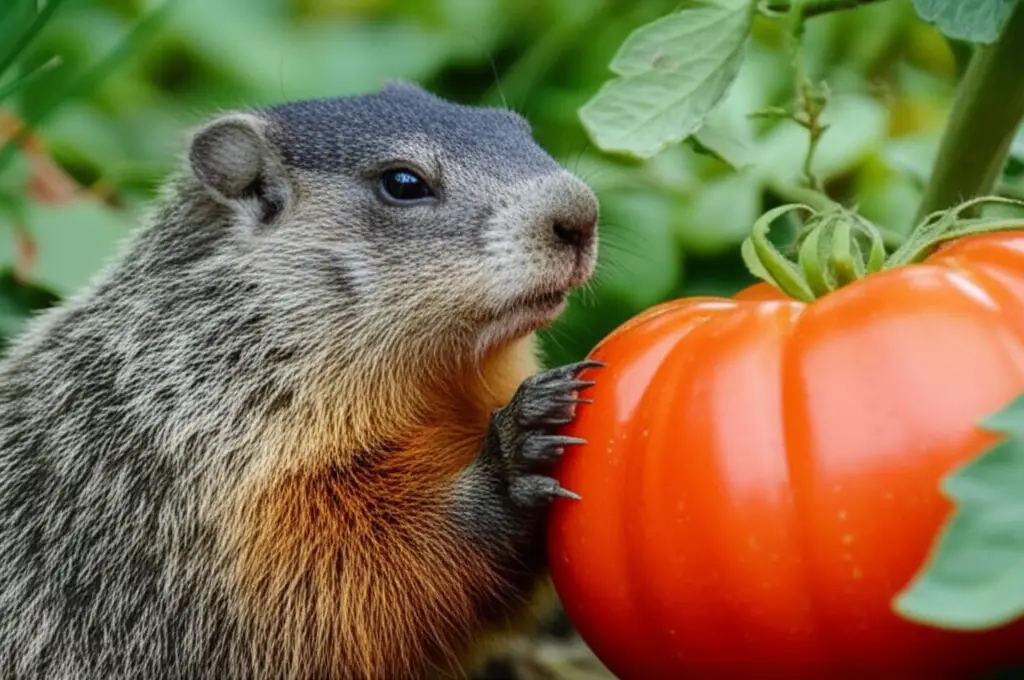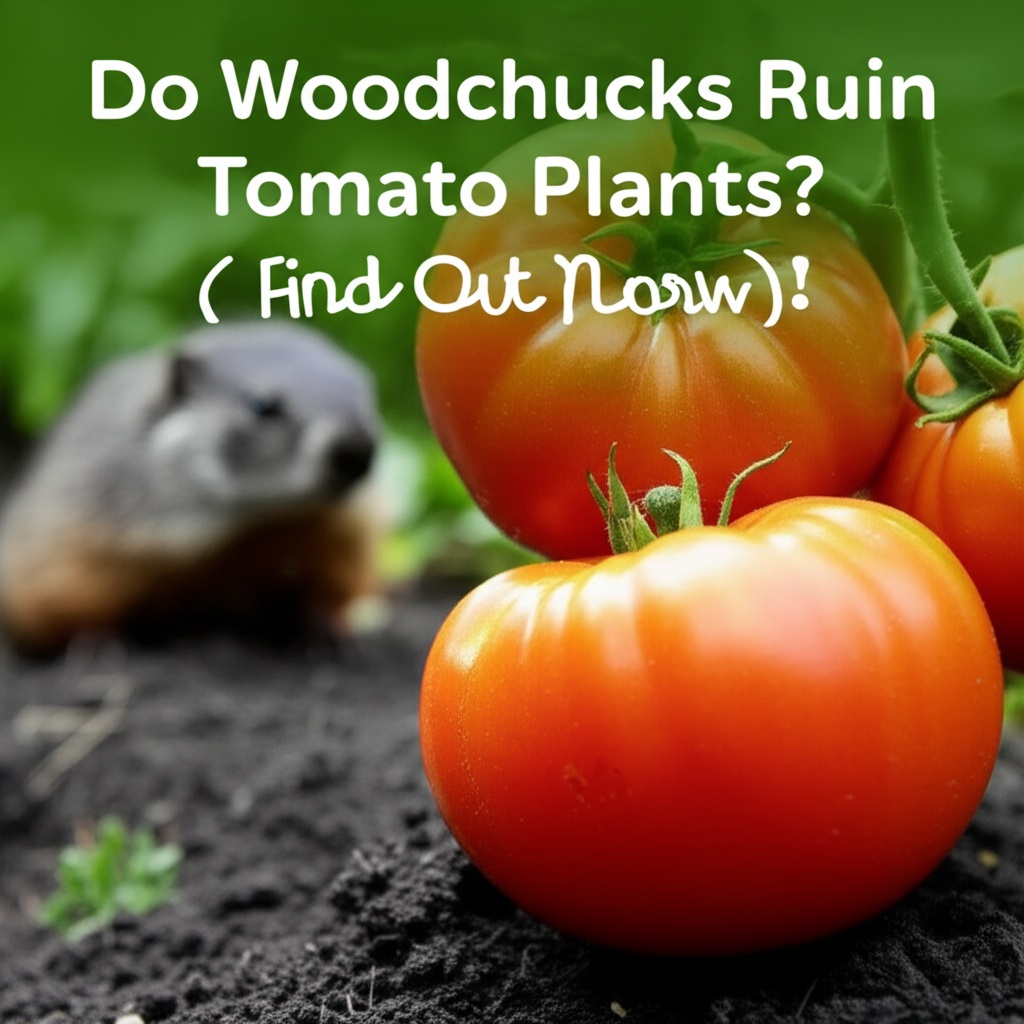This post explores whether woodchucks ruin tomato plants, discussing their dietary habits, signs of woodchuck damage, and effective prevention and control methods to protect your garden.

Woodchucks, also known as groundhogs, can be a nuisance in gardens. This post investigates their potential impact on tomato plants, providing insights into identifying woodchuck damage and implementing effective strategies to keep them away from your precious crops.
JUMP TO TOPIC
Understanding Woodchuck Dietary Habits
Woodchucks are herbivores, meaning their diet primarily consists of plants. While they have a diverse palate, including clover, alfalfa, dandelions, and various grasses, they are also known to enjoy fruits and vegetables found in gardens. This includes, unfortunately, the juicy, ripe tomatoes that many gardeners painstakingly cultivate.
What Attracts Woodchucks to Gardens?
Several factors can attract woodchucks to your garden:
Food Availability: A garden brimming with fresh produce offers a readily available food source for woodchucks.
Shelter: Overgrown vegetation, woodpiles, and burrows under sheds or decks provide ideal hiding places.
Water Source: A nearby pond, stream, or even a birdbath can attract woodchucks seeking hydration.
Signs of Woodchuck Damage in Your Tomato Garden
Identifying woodchuck damage is crucial for implementing effective control measures. Look for these telltale signs:
Clean Cuts: Woodchucks have sharp teeth that create clean, angled cuts on stems and fruits. Unlike ragged tears caused by other animals, woodchuck damage appears almost surgical.
Missing Plants or Fruits: Partial or complete disappearance of tomato plants or fruits is a strong indicator of woodchuck activity.
Large Droppings: Woodchuck droppings are relatively large, dark brown, and cylindrical. Finding these near your tomato plants can confirm their presence.
Burrows: Woodchucks dig extensive burrow systems with multiple entrances. Identifying these burrows near your garden is a sure sign of woodchuck activity.
Tracks: Woodchucks have distinctive tracks, with five toes on their front paws and four on their back paws.
Effective Woodchuck Prevention and Control Methods
Protecting your tomato plants from woodchucks requires a multi-pronged approach:
Fencing
Erecting a sturdy fence around your garden is one of the most effective ways to deter woodchucks. Consider these factors:
Material: Use galvanized steel mesh fencing, as woodchucks can easily chew through chicken wire.
Height: The fence should be at least 3 feet high and extend 1 foot below ground to prevent burrowing underneath.
Angle: Bury the bottom foot of the fence outwards, creating an “L” shape to further discourage burrowing.
Repellents
Commercial woodchuck repellents are available in various forms, including sprays, granules, and ultrasonic devices. While their effectiveness can vary, they can offer a supplemental layer of protection. Follow product instructions carefully.
Natural Deterrents
Several natural methods can discourage woodchucks:
Strong-Smelling Plants: Woodchucks dislike the scent of certain plants, such as garlic, onions, mint, and marigolds. Planting these around your tomato plants can act as a natural deterrent.
Human Hair: Scattering human hair around your garden can deter woodchucks, as they associate the scent with humans.
Predator Urine: Commercially available predator urine, such as coyote or fox urine, can create the illusion of a predator’s presence and deter woodchucks.
Trapping
Trapping can be a humane and effective method for removing woodchucks. Check local regulations regarding trapping and relocation before employing this method. Use live traps and relocate the captured woodchucks to a suitable location away from residential areas.
Professional Wildlife Removal
If you’re facing a persistent woodchuck problem, consider contacting a professional wildlife removal service. They have the expertise and equipment to safely and effectively remove woodchucks from your property.
FAQs: Do Woodchucks Ruin Tomato Plants?
Q: Are woodchucks and groundhogs the same animal?
A: Yes, woodchuck and groundhog are different names for the same animal ( Marmota monax).
Q: What time of day are woodchucks most active?
A: Woodchucks are primarily diurnal, meaning they are most active during the day, particularly in the early morning and late afternoon.
Q: Do woodchucks hibernate?
A: Yes, woodchucks are true hibernators, spending the winter months in their burrows.
Q: How can I tell if a woodchuck is living under my shed?
A: Look for burrow entrances, droppings, and signs of digging around the shed’s foundation.
Q: What should I do if I see a woodchuck in my garden?
A: Make loud noises or clap your hands to scare it away. Avoid approaching or cornering the animal.
Conclusion
Woodchucks can indeed pose a significant threat to your tomato plants. By understanding their dietary habits, recognizing the signs of their damage, and implementing effective prevention and control methods, you can protect your garden and enjoy a bountiful tomato harvest. Combining strategies like fencing, repellents, and natural deterrents provides the best defense. If the problem persists, consider contacting a professional wildlife removal service for assistance. Remember, early intervention is key to minimizing woodchuck damage and ensuring the health of your tomato plants.

